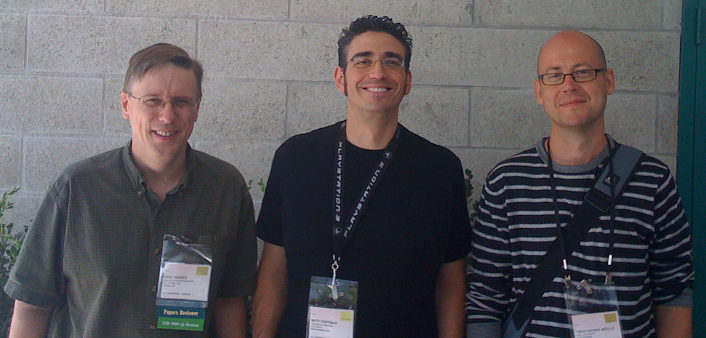Pixar’s Renderman rendering package is based on the REYES rendering pipeline (an acronym for the humble phrase “Render Everything You Ever Saw”). Most film studios use Pixar’s Renderman, and many others use renderers operating on similar principles. A close reading of the original REYES paper shows a pipeline which was designed to be extremely efficient (it had to be, to run on 1980’s hardware!) and produce very high quality images. I have long thought that this pipeline is a good fit for graphics hardware (given some minor changes or an increase in generality), and is perhaps a better fit to today’s dense scenes than the traditional triangle pipeline. A paper to be published in SIGGRAPH Asia this year describes a GPU implementation of the subdivision stages of the REYES pipeline, which is a key step towards a full GPU REYES implementation. They use CUDA for the subdivision stages, and then pass the resulting micropolygons to a traditional rendering pass. Although combining CUDA and traditional rendering in this manner introduces performance problems, newer APIs such as DX11 compute shaders have been designed to perform well under such conditions. Of course, this algorithm would be a great fit for Larrabee.
Anyone interested in the implementation details of the REYES algorithm should also read “How PhotoRealistic RenderMan Works”, which is available as a chapter in the book Advanced Renderman and in the SIGGRAPH 2000 Renderman course notes.
I found this paper on Ke-Sen Huang‘s SIGGRAPH Asia preprint page. Ke-Sen performs an invaluable service to the community by providing links to preprints of papers from all the major graphics-related conferences. This preprint page is all the more impressive when you realize that SIGGRAPH Asia has not even published a list of accepted papers yet!
